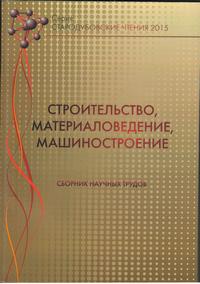Research on the possibility of controlling the properties of the structural steel surface hardening methods
Keywords:
Carburizing, hardening, the metastable residual austenite, wear resistanceAbstract
Purpose. For cleaning small castings are widely used blast units machines periodic action. Working capacity these machines is mainly determined by the durability of working bodies that are experiencing Shock intensity abrasive wear. Needs some regime of surface hardening, as a result of which you can increase the wear resistance of the blades shot blasting machines and thereby reduce the expense for their manufacturing and replacement. Methodology. Proposed regime of surface hardening is carburizing and holding followed hardening from different temperatures. This surface treatment allows to obtain in the structure along with martensite and carbides large amount of residual austenite (Ares), that undergoes deformation martensite transformation in wear (DMPW) in the contact zone. Findings. It is shown that by changing the temperature of the hardening can be controlled phase composition, the number of metastable residual austenite and mechanical properties of carburized steel. Residual austenite in this case, is not reduced, as is commonly believed, but rather increases the abrasive wear resistance of carburized steel. It was found that to improve the wear resistance of steels surface treatment should be aimed at obtaining a surface layer of metastable austenitemartensite- carbide structure in which metastable residual austenite capable of DMPW. DMPW causes additional self-strengthening of surface layers of the working means and the formation of a particulate solid a martensite deformation compared with martensite hardening. Determined the optimal hardening regimes that improve wear resistance of parts 3-4 times. Originality. Developed new regimes of surface hardening low alloy steel. Practical value. Conducted production tests of the blades of steel shot blasting systems 20Mn, heat-treated using new regimes of hardening, showed that these details have a lifespan of up to 90-96 hours, which is 3-4 times the service life of the blades that are used in manufacturing without treatment.
References
Щербицкий А.М. Эффективный материал для лопастей дробеметных аппаратов / А.М. Щербицкий, Омар Мохамед Абулгани // Восточно-Европейский журнал передовых технологий. - №4. - С. 32-33.
Scherbitsky A.M. Effective material for of the blades shot blasting machines / A.M. Scherbitsky, Omar Mohamed Abulgani // East European Journal of advanced technologies. - №4. - pp 32-33.
Чейлях А.П. Экономнолегированные метастабильные сплавы и упрочняющие технологии / А.П. Чейлях. - Мариуполь: издательство ПГТУ. - 2009. - 483 с.
Cheiliakh A.P. Sale-alloyed metastable alloys and hardening technology / A.P. Cheiliakh. - Mariupol: publishing PSTU. - 2009. - 483 p.
Малинов Л.С. Влияние цементации и последующей термообработки на структуру, фазовый состав и абразивную стойкость Fe-Cr-Mn сталей / Л.С. Малинов, А.П. Чейлях, Е.Л. Малинова // Изв. АН СССР. Металлы. - 1991. - № 1. - С. 120-122.
Malinov L.S. Effect of carburizing and subsequent heat treatment on the structure, phase composition and abrasion resistance Fe-Cr-Mn of steels / L.S. Malinov, A.P. Cheiliakh, E.L. Malinova // Math. USSR Academy of Sciences. Metals. - 1991. - № 1. - pp 120-122
О роли остаточных напряжений в повышении предела выносливости стали при химико-термической обработке / Б.Г. Гуревич, С.Ф. Юрьев // М.: Машгиз, 1952. С. 43-63.
On the role of residual stresses in increasing the endurance limit of steel with chemical-thermal treatment / B.G. Gurevich, S.F. Yuriev // M.: Mashgiz, 1952. pp 43-63.
А.Д. Ассонов. Технология термической обработки деталей машин. - М.: Машиностроение, 1969. - 120 с.
A.D. Assonov. Technology heat treatment of machine parts. - M .: Engineering, 1969. – 120
Попов В.С. Структурные изменения в нестабильно аустенитных сталях при абразивном изнашивании / В.С. Попов, Н.Н. Брыков // МиТОМ. - 1971.- № 9. - С. 54-55.
V.S. Popov Structural changes in the unstable austenitic steels with abrasive wear / V.S. Popov, N. Brykov // MandHTM. - 1971. - № 9. - pp 54-55.
Малинов Л.С. Повышение абразивной износостойкости цементированных сталей 18ХГТ и 12ХНЗА за счет получения метастабильного аустенита / Л.С. Малинов, Е.Л. Малинова, Е.Я. Харланова // Металлы.- 1993. - № 2. - С. 108-111.
Malinov L.S. Increasing the abrasive wear resistance carburized of steels 18CrMnTi and 12CrNi3 by obtaining metastable austenite / L.S. Raspberries, E.L. Raspberry, E.Y. Harlanova // Metals. - 1993. - № 2. - pp 108-111.
Геллер А.Л. Остаточный аустенит и износостойкость легированных цементованных сталей / А.Л. Геллер, В.Н. Юрко // Изв. ВУЗов. Черная металлургия.- 1991. - №6. - С. 66-69.
Geller A.L. Residual austenite and wear resistance of carburized of steels alloyed / A.L. Geller, V.N. Yurko // Math. Colleges and universities. Iron and steel. - 1991. - №6. - pp 6669.
Downloads
Published
Issue
Section
License
Редакція Видання категорично засуджує прояви плагіату в статтях та вживає всіх можливих заходів для його недопущення. Плагіат розглядається як форма порушення авторських прав і наукової етики.
При виявлені у статті більш ніж 25% запозиченого тексту без відповідних посилань та використання лапок, стаття кваліфікується як така, що містить плагіат. У цьому випадку стаття більше не розглядається редакцією, а автор отримує перше попередження.
Автори, в статтях яких повторно виявлено плагіат, не зможуть публікуватися в усіх журналах Видавництва ДВНЗ «Придніпровська державна академія будівництва та архітектури».
Автори, які публікуються у цьому журналі, погоджуються з наступними умовами:
- Автори залишають за собою право на авторство своєї роботи та передають журналу право першої публікації цієї роботи на умовах ліцензії Creative Commons Attribution License, котра дозволяє іншим особам вільно розповсюджувати опубліковану роботу з обов'язковим посиланням на авторів оригінальної роботи та першу публікацію роботи у цьому журналі.
- Автори мають право укладати самостійні додаткові угоди щодо неексклюзивного розповсюдження роботи у тому вигляді, в якому вона була опублікована цим журналом (наприклад, розміщувати роботу в електронному сховищі установи або публікувати у складі монографії), за умови збереження посилання на першу публікацію роботи у цьому журналі.
- Політика журналу дозволяє і заохочує розміщення авторами в мережі Інтернет (наприклад, у сховищах установ або на особистих веб-сайтах) рукопису роботи, як до подання цього рукопису до редакції, так і під час його редакційного опрацювання, оскільки це сприяє виникненню продуктивної наукової дискусії та позитивно позначається на оперативності та динаміці цитування опублікованої роботи (див. The Effect of Open Access).

